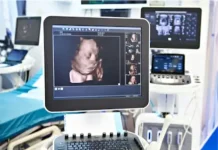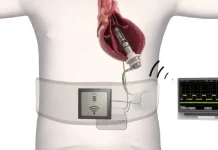OrthAlign has expanded its portfolio of Lantern handheld navigation systems by securing a 510(k) clearance from the US Food and Drug Administration (FDA) for its Lantern Hip device.
The US regulatory agency has approved the device’s use to visualise the hip components during total hip arthroplasty surgery. The Lantern Hip device obviated the need for pre-operative imaging and is compatible with most implant systems allowing for use in ambulatory surgical centres, according to OrthAlign.
Related: Stimvia plans to enter US neuromodulation market after MDR certification
“The system provides the information I need to accurately position each patient’s hip components based on their unique anatomy, and I can hit the leg length and offset targets I want to achieve,” said Dr Edwin Su, orthopaedic surgeon at the Hospital for Special Surgery in New York.
“These advancements, coupled with the new ability to place the cup in relation to the functional pelvic plane, hold the potential to greatly improve patient outcomes.”
GlobalData expects the market for orthopaedic devices will grow from being worth approximately $53.9bn in 2024 to over $70.4bn by 2030. The hip reconstruction segment is also expected to share in the market boom and expand from being worth approximately $8bn in 2024 to over $10.6bn by 2030.
OrthAlign notes that that Lantern Hip device has accelerometers and gyroscopes allowing surgeons to streamline workflow by allowing for real-time navigation for cup positioning, and restoration of leg length and offset. The technology also enables individualised cup positioning compared across multiple planes, including the functional pelvic plane, anterior pelvic plane, and coronal plane, with live pelvic tracking.
OrthAlign has had success in expanding market access in the US, reporting a record annual revenue of $50m last year. The company also identified ambulatory surgical centres as a growing area for its technology, noting a 37% revenue growth in the segment, according to OrthAlign ’s financials.






